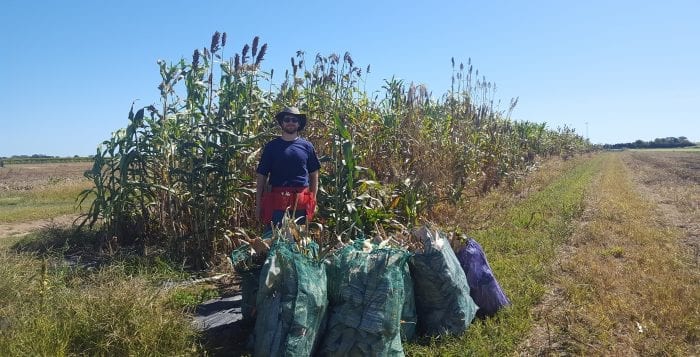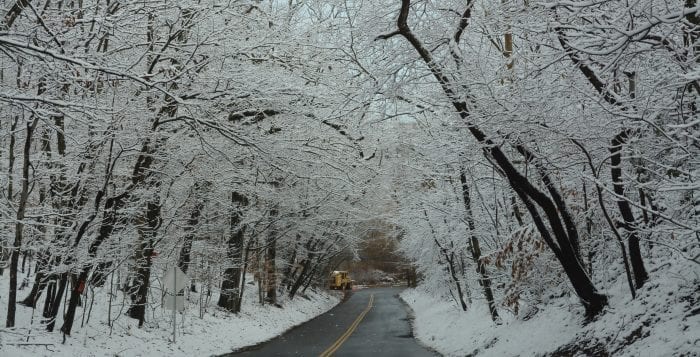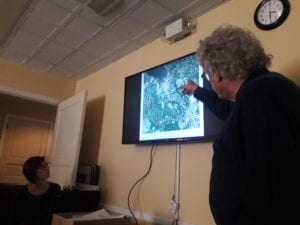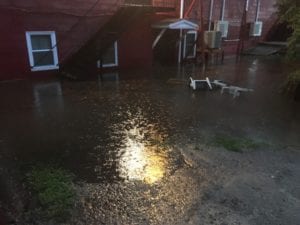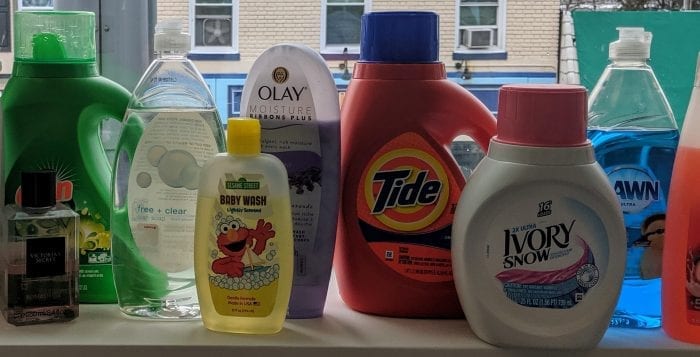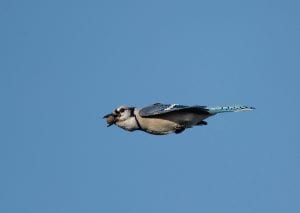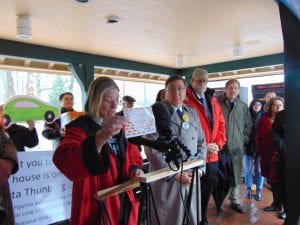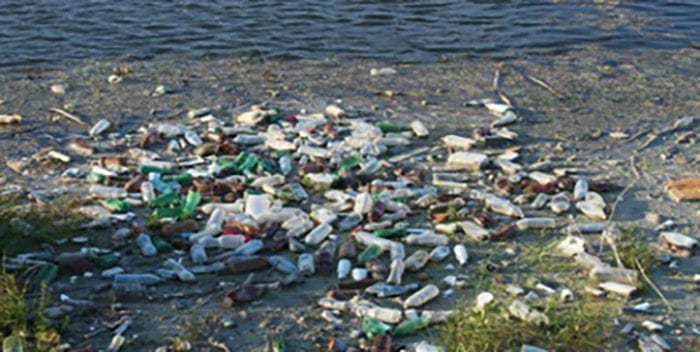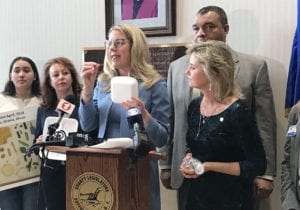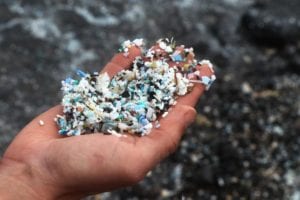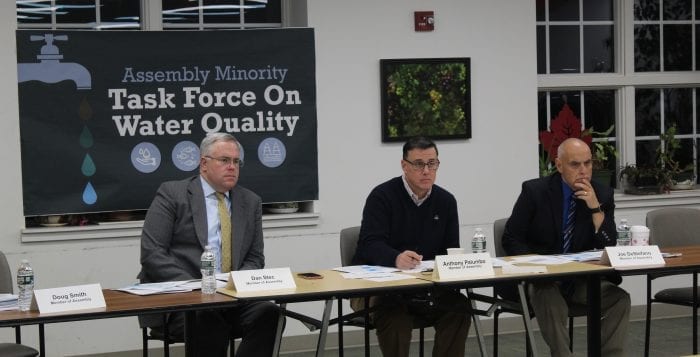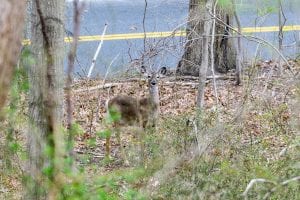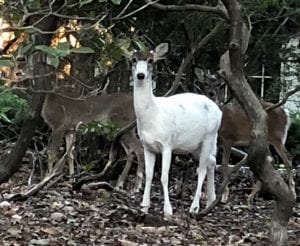By Daniel Dunaief
When people buy a bag of potato chips, they often find that half of the bag is filled with air. The same is true of a sorghum plant, which produces livestock feed and is converted into ethanol, part of many gases that power cars.
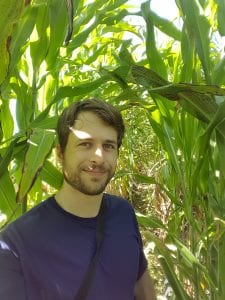
In a typical sorghum plant, half of the flowers become grain, while the other half remain infertile. As the world grapples with food shortages and scientists seek ways to increase the yield of a wide array of plants, researchers at Cold Spring Harbor Laboratory wondered whether they could increase that yield.
Building on previous work done in the lab of Doreen Ware, an adjunct professor at CSHL, postdoctoral fellow Nicholas Gladman characterized a mutation for a single gene that lowered the level of a hormone. The effect of the lower hormone, or jasmonic acid, at a specific time and place within plant development doubled the fertility of the sorghum plant.
“When we don’t have a functional version of this enzyme, it releases this form of development that wouldn’t normally occur,” Gladman said. “You get increased fertility in flowers.”
The gene they studied is called MSD2. The researchers published their work in International Journal of Molecular Sciences. Another gene, MSD1, which Ware’s lab characterized in 2018, is a likely regulator for MSD2. Other genes may also serve as regulators of MSD2, Gladman said. Disruptions in either gene leads to altered flower development and seed production.
Gladman’s postdoctoral research adviser Zhanguo Xin collaborated on the work. Xin, who is a research molecular biologist at the United States Department of Agriculture’s Agricultural Research Service, explained that Gladman characterized the mutants, identified the interaction between MSD1 and MSD2 and identified the regulatory sequences of MSD1.
This research could extend to other cereal crops, which have the same conserved sets of genes that affect their growth and fertility.
A concern in altering any gene resides in the overall effect on the health of the plant. Creating a super plant that falls over and dies in a slight wind, can’t fend off common infections, or requires a perfect blend of soil would likely offset the benefit of the increased fertility. Plant geneticists would like to ensure any mutation doesn’t make the plant less viable in the long run.
“Sometimes there can be a trade off between an agriculturally beneficial genetic change by introducing other detrimental effects,” Gladman explained in an email. “Optimally, plant geneticists will try to ensure the side effects of any mutation are insignificant to farmers; sometimes, this is more difficult and the downsides may not always present themselves at the early stages of lab investigation.”
This particular gene is narrowly and spatially expressed within the plant, Gladman said, and the researchers haven’t been able to identify or quantify the effect of this gene on anything else other than flowers and floral architecture.
The gene and the hormone would be a concern if it were expressed more broadly and at high levels throughout other plant tissues, but that doesn’t seem to be the case, he said.
The researchers have looked at other tissues, such as the leaf and stem, and have found that MSD2 is expressed in low levels in these other areas. Plants that have the MSD2 mutation do not demonstrate any noticeable differences in growth compared to nonmutants in the field or in greenhouse conditions. If this mutated gene had an agricultural benefit, farmers would likely crossbreed a plant that had this gene with an elite sorghum hybrid line
Ideally, the benefits of the increased fertility would combine with benefits of all the genetic components of the hybrid lines as well. The way the researchers involved in this study produced this more fertile version of sorghum is an “acceptable type of breeding for organic or conventional farming,” Gladman said.
While the plant increases the grain number per seed head, it doesn’t necessarily produce greater overall yield in part because the seeds are smaller. Researchers haven’t been able to confirm that yet in a field condition, although they hope that’s the case.
Gladman was grateful for the opportunity to work in Ware’s lab and to collaborate with Xin. The effects of disrupting similar genes in maize and Arabidopsis, which is a plant in the mustard family that scientists often use in genetic studies, influences flower fertility.
He said researchers in Ware’s lab can perform additional developmental analysis. The researchers in Ware’s lab may seek additional collaborators for other analyses down the road as well.
“How this particular pathway is triggered and cross-communicates with other developmental pathways is very complex, but influences so much about traits that control grain production and yield that it is essential for further investigations,” he explained.
Gladman arrived at Cold Spring Harbor Laboratory in 2017. Prior to conducting research on Long Island, he finished his doctorate at the University of Wisconsin at Madison, where he worked on Arabidopsis. He decided he wanted to get more involved with crop species and explored research opportunities at United States Department of Agriculture labs. He was working with Xin in Lubbock, Texas, before transitioning to Cold Spring Harbor Laboratory.
Gladman has been delighted by the “wonderful place to learn,” where he is surrounded by “people who are always willing to talk and engage and collaborate.”
A resident of Greenlawn, Gladman enjoys hiking along the Hudson and in the Adirondacks. He credits a high school biology class he took in Grandview Heights High School in Columbus, Ohio, with instilling in him and his three brothers an appreciation and love of science. He particularly enjoyed a unit on the “genetics of disease” that inspired him to pursue a career in the sciences.
As for his work, Gladman is excited to be a part of research that may, one day, increase the productivity of crop species. He said thoughts about food shortages are “a constant concern and driver of our research.”

